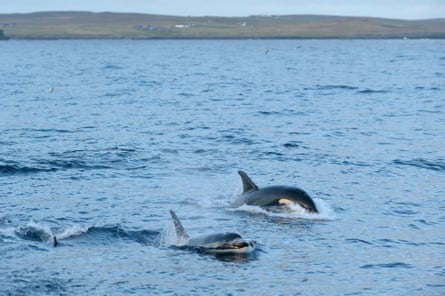
Nearly half of the whales and dolphins found in UK waters over the past five years contained harmful concentrations of toxic chemicals banned decades ago, an investigation has found.
Among orcas stranded in the UK, levels of PCBs, a group of highly dangerous and persistent chemicals that do not degrade easily, were 30 times the concentration at which the animals would begin to suffer health impacts, researchers said.
Scientists described the findings as a “huge wake-up call” that should ring alarm bells not only for the future of marine mammal health but for human health, too.
Dr Rosie Williams, lead author and researcher from the Zoological Society of London’s (ZSL) Institute of Zoology, said: “It’s been over 20 years since several of these chemicals were banned globally, yet we still see concerningly high concentrations in wildlife.
“Although concentrations of the pollutants seem to be declining, our findings reveal that in many species they are still present at levels associated with negative effects on the immune and reproductive systems.”
High PCB concentrations are a major cause of decline in European cetacean populations, studies have found. One paper, from 2018, suggests orcas near industrialised areas could be at risk of population collapse as a result.
For the latest report, scientists examined postmortem records and tissue samples from 1,000 marine mammals, consisting of 11 different species stranded in the UK, using data collected over 30 years by a partnership including ZSL’s Cetacean Strandings Investigation Programme, a government-funded project, and the Centre for Environment, Fisheries and Aquaculture Science.
They found that concentrations of PCBs, once widely used but banned globally in 2004 under the Stockholm convention, were highest in long-lived species at the top of the food chain: orcas, bottle-nosed dolphins and white-beaked dolphins.
Researchers said they controlled for the bias introduced by examining stranded animals, whose deaths may have been hastened by chemicals, by including a high percentage of deaths from trauma, such as boat strikes or entanglement with fishing lines.
The toxins, initially taken up by plankton at the bottom of the food chain and not susceptible to being broken down, increase in concentration the higher up the chain they go, a process known as “biomagnification”, Williams said.
In 2017, Lulu, an orca from the UK’s last resident pod, was found dead on Tiree in Scotland. She was discovered to have one of the highest concentrations of toxic pollutants ever found in a marine mammal. The extreme level of PCBs in her blubber, at 950mg/kg (0.033oz/2.2lb) – more than 100 times the limit of 9mg/kg regarded as safe – was believed by some scientists to have contributed to her infertility.
“This is a huge wake-up call,” said Williams, who called for urgent action to protect the marine environment from historical and emerging pollutants. “We rely on the same ecosystem for some of our own food – so these findings ring alarm bells not only for the future of marine life but indicate a risk to human health also.”
The NHS advises pregnant and breastfeeding women, those trying to get pregnant and girls to eat no more than two portions of oily fish a week, because chemical pollutants may build up and affect the future development of a baby in the womb.


